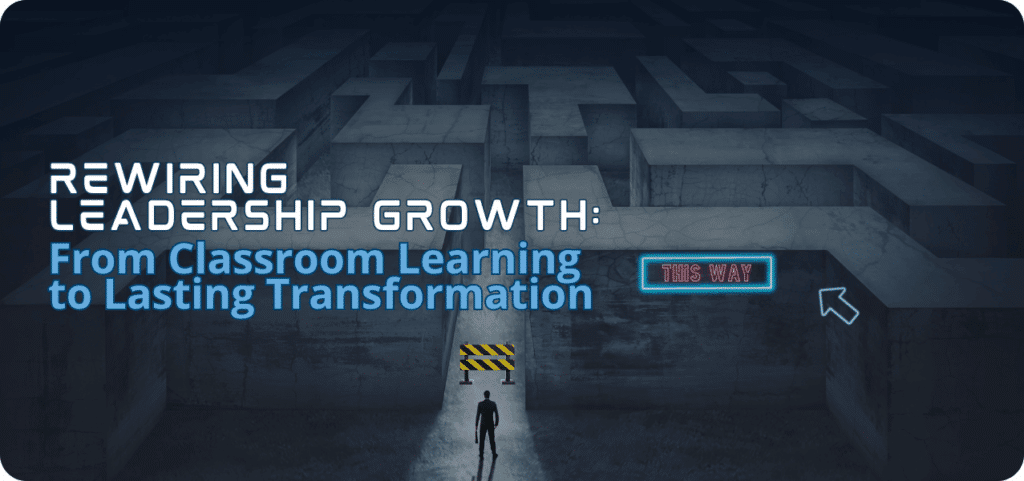The Importance of Organizational Resilience

Bouncing back from setbacks in the business world is challenging. Regardless of your industry, leaders and their teams will have to face adversity at some point during the life of their organization. While some people will crumble at the sight of a challenge, others will instead look at the situation, determine what is and isn’t working and change direction based on the best path forward.
In a time when workforces are facing significant threats to their ability to succeed, building organizational resilience and problem-solving is more important than ever. From the rapid decline of the planet to regulation tightening, the political climate and the introduction of new technologies, leaders are up against challenging terrain. However, managers and employees who can turn times of crisis into opportunities for organizational change and growth will be the ones to ensure the business stands the test of time.
Change is something we have no control over – there’s no point where it stops. The good news is, there are ways of managing disruptions to business without crumbling under the pressure. In this article, we’ll explore the question “What is organizational resilience?”, discussing how it sets one business apart from another, the skills needed to foster this characteristic in your work environment and how you can use it to safeguard your business for future success.
Defining Organizational Resilience
In a nutshell, organizational resilience is an organization’s ability to remain flexible and bounce back from obstacles and adverse events. These obstacles can include anything from a global pandemic to natural disasters and talent shortages in a competitive business environment.
Businesses regularly establish routines in the way they operate, but when problems arise and they’re thrown a curve ball, those routines and competencies may no longer work for the situation managers find themselves in. Preparedness and implementing a risk management program are crucial to recovering and resisting the impacts of change, as well as maintaining a competitive advantage.
One of the quickest ways to learn organizational resilience is to be thrown in the deep end. However, if a business isn’t equipped to deal with the fast nature of change and unexpected events, it can be incredibly detrimental to its future success. Taking an in-depth look at your processes and management systems, analyzing their ability to withstand significant events and coming up with alternative responses and initiatives will determine how effectively a business can adapt to a “new normal.”
What Sets Resilient Organizations Apart?
Take for example the COVID-19 pandemic – many businesses suffered enormously in terms of their financial stability, staffing, supply issues and their ability to adjust to new ways of operating. Organizations that showed resilience were those that transformed with the environment, built new attitudes and structures and influenced change. Instead of shying away from the challenge of adapting to unprecedented circumstances, effective leaders were able to not only respond but actually embrace this global event as an opportunity to learn and grow in real-time.
By welcoming different ways of thinking and doing in uncertain times, businesses can stay one step ahead when events out of their control come into play. In turn, this creates space for a resilient workplace culture to flourish and generate sustainable ways of operating.
Factors Influencing Organizational Resilience
Offering learning and development programs to managers and employees is a great way to build organizational resilience in unpredictable situations. When introducing these models in your workplace, it is important to acknowledge that each employee has a unique learning process. By customizing training methods to accommodate various learning styles and levels, you can ensure positive results and empower your staff.
Incorporating webinars, psychological learning, mentoring, quizzes, e-learning and other tools into your training plan can also foster employee growth and enhance organizational resilience. While it is key to guide employees through learning modules, it’s also important to give them task autonomy so they can have the chance to put their knowledge into practice. When individuals are supported by leaders, it helps to establish a sense of trust between both parties, increases employee motivation levels and adds to a healthy workplace culture.
Building Organizational Resilience
In addition to providing learning and development opportunities to employees, businesses must model effective leadership for those who look to them for guidance. Even in scenarios where an individual has held managerial or senior leader positions before, they too need to remain consistent in knowledge growth and skill enhancement to build organizational resilience.
Carrying out leadership training is one of the best moves a company can make to ensure that the messages surrounding organizational resilience are communicated in a way that trickles down to all of its departments. Being approachable, transparent and innovative equips managers to deal with complex issues when they arise. These are just some of the qualities that differentiate a good business leader from a great one.
Measuring Organizational Resilience
You may be asking yourself at this point, “How do I know if I have succeeded in building a resilient organization?” The answer is simple: measure it regularly. The best place to start is by looking at your company objectives and the values you established to deal with challenges initially. The next step is assessing whether or not these values were incorporated into the work each team member was tasked with doing.
While we can look at a business as a sole entity, its strength in times of change is reliant on the people within it and their individual resilience. Everybody has a role to play and it begins with the leaders. By carrying out a formal leadership review and assessing whether the systems were in place to support those in these managerial roles, you can get a clearer picture of the overall health of an organization’s resilience.
Taking a look at the decision-making processes and breaking them down will also act as a good measure of organizational resiliency. Crisis management is about asking yourself questions like: “Can staff work remotely if they have to? Is there enough support for staff when things go wrong? Are the lines of communication easy to access?” – if the answers to these are “yes”, then you’re on the right track.
Carrying out staff surveys, group discussions, self-assessments, questionnaires and gathering metrics is also an efficient way to determine how resilient your workforce is.Insights into your vulnerabilities and customer satisfaction levels are also useful when reviewing the overall health, viability and sustainability of the business following a period of change.
Conclusion
Bouncing back from setbacks in the business world can be daunting, filling leaders with uncertainty about the road ahead. However, with the right tools to manage change and build resilience, leaders can look at a situation, determine what is and isn’t working and forge a new path forward. It may not be the road you expected to travel, but the greatest successes often occur on the road less traveled.
At WDHB, we’re here to help you build organizational resilience so that you can face any challenges that may come your way – no matter the sector or industry you work in. Reach us at wdhb.com/contact to launch headfirst into an inspiring and innovative organizational future.
Author
Subscribe to get Access to Exclusive Content





